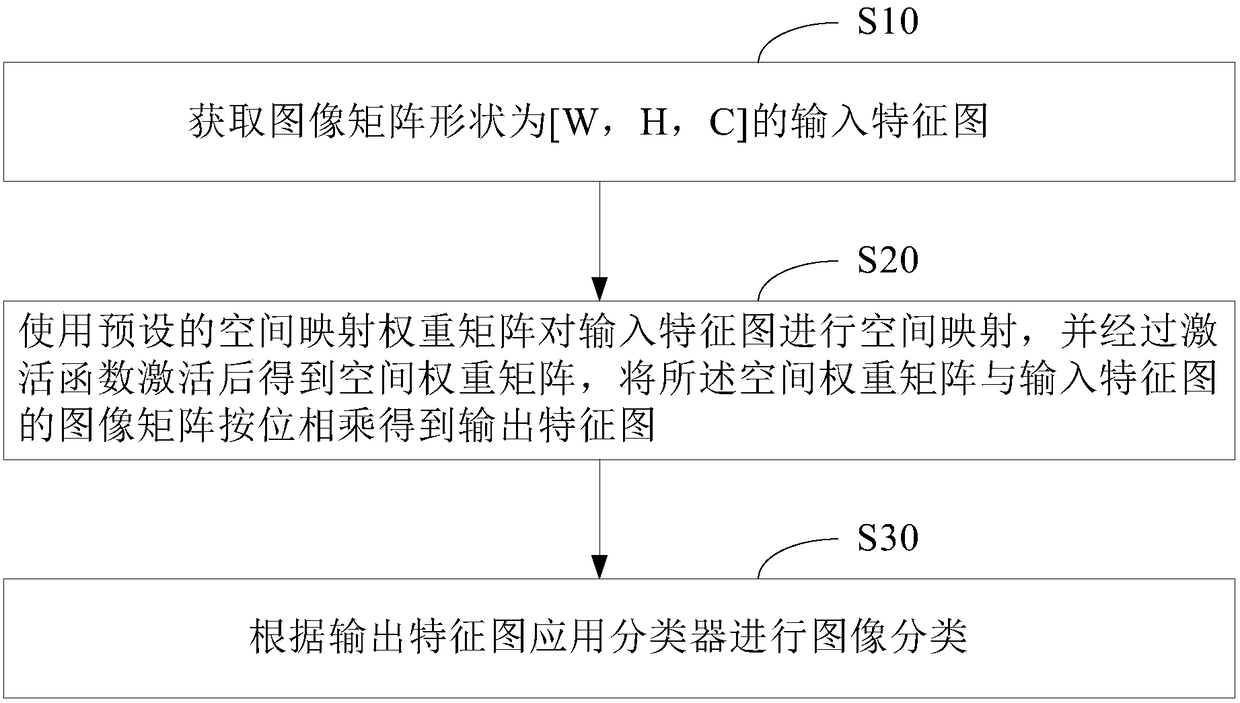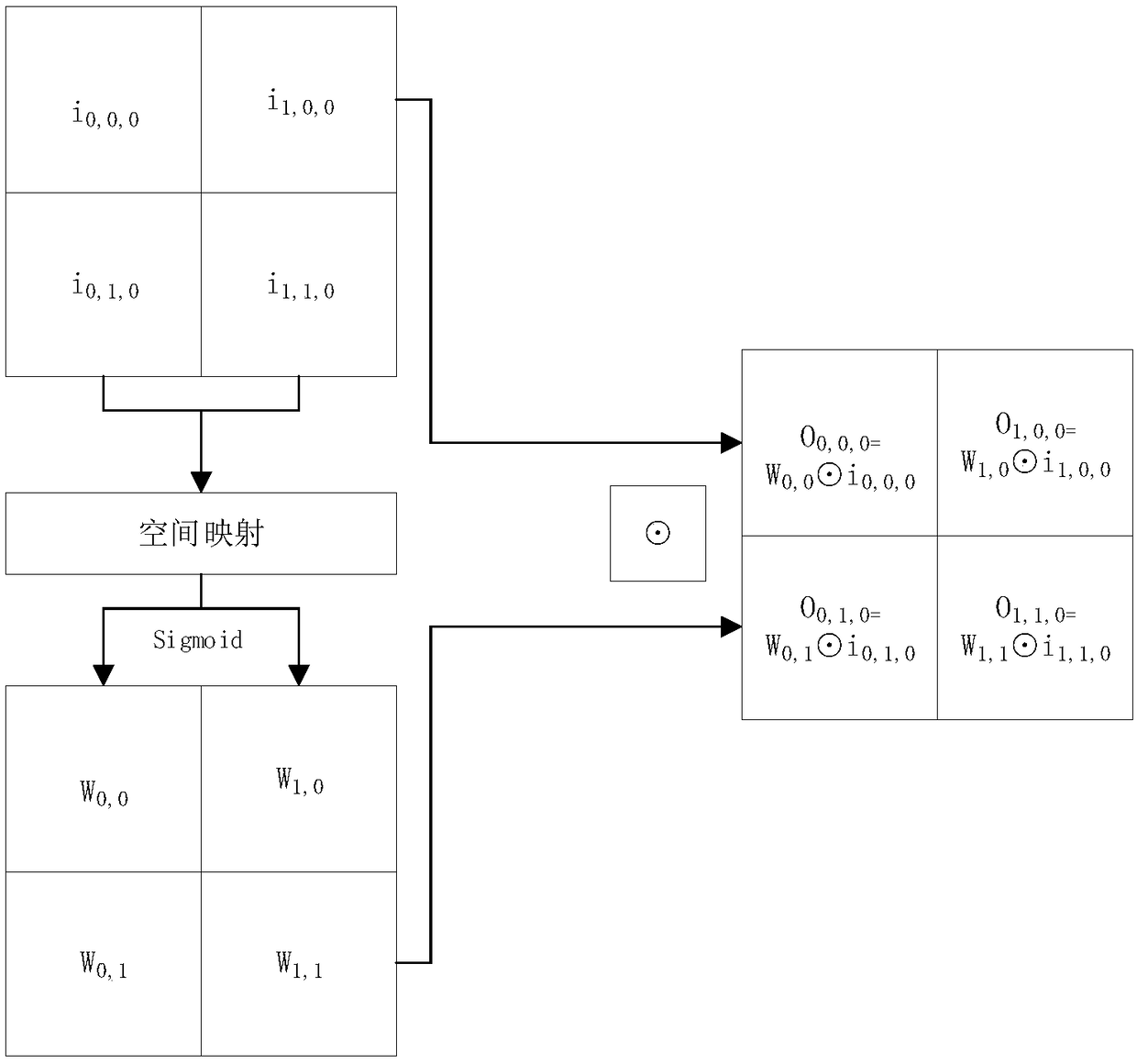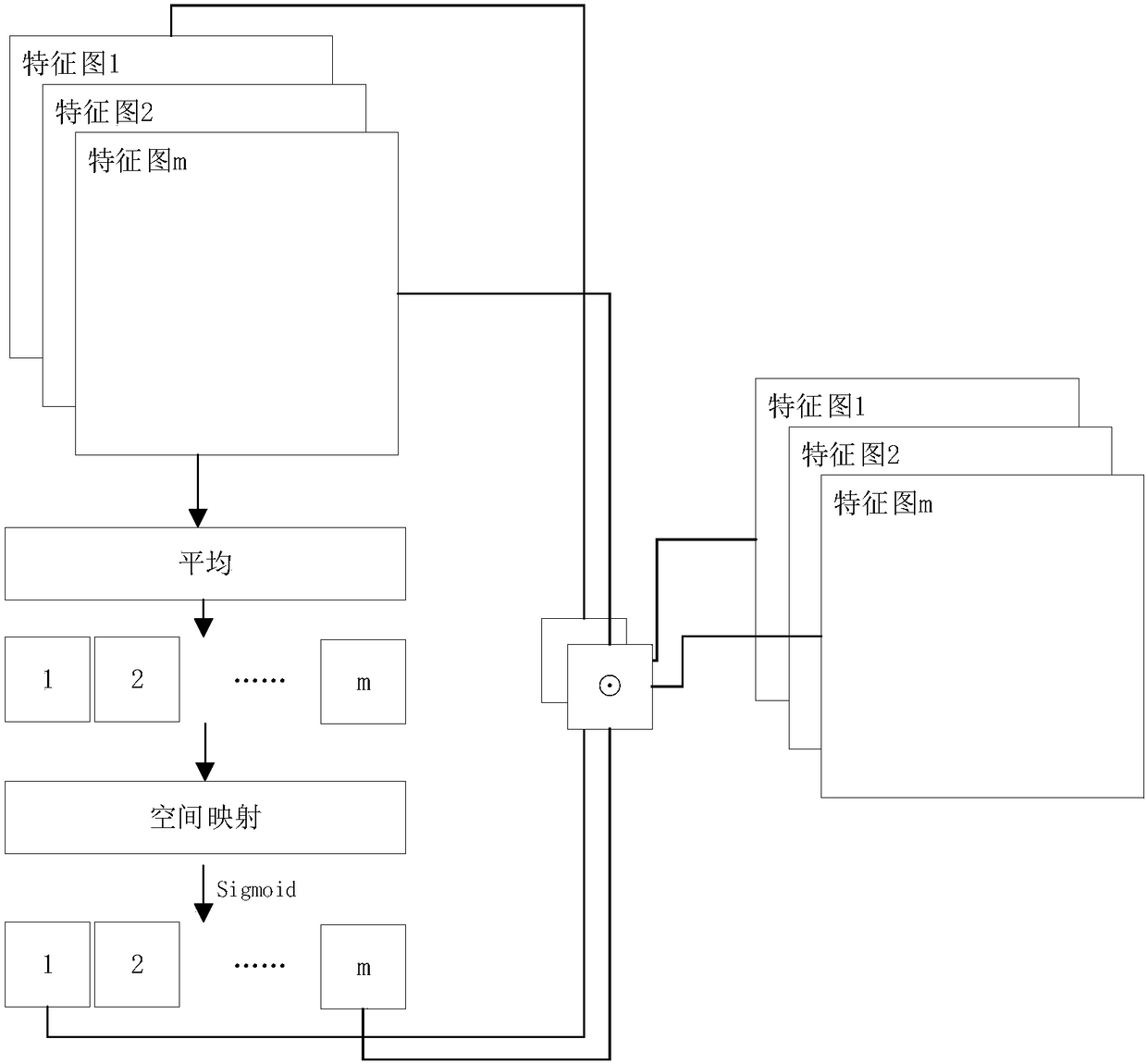Attention model-based image identification method and system
An attention model and image recognition technology, applied in the field of image processing, can solve problems such as ignoring local information of data and poor generalization ability of different data
- Summary
- Abstract
- Description
- Claims
- Application Information
AI Technical Summary
Problems solved by technology
Method used
Image
Examples
Embodiment 1
[0042] figure 1 It is a schematic flow chart of an image recognition method based on an attention model of an embodiment, and an image recognition method based on an attention model includes the following steps:
[0043] Step S10: Obtain the input feature map of the shape of the image matrix [W, H, C], where W is the width (the width of the image, in pixels), H is the height (the height of the image, in pixels), and C is Number of channels (number of color channels of the image). The image matrix here is a three-dimensional matrix, and the format of [W, H, C] can also be written in the format of W*H*C, that is, width*height*number of channels.
[0044] Step S20: Use the preset spatial mapping weight matrix to spatially map the input feature map, and obtain the spatial weight matrix after being activated by the activation function, and multiply the spatial weight matrix and the image matrix of the input feature map bit by bit to obtain the output feature map, Among them, the ...
Embodiment 2
[0055] Figure 4 It is a schematic flow chart of an image recognition method based on an attention model in another embodiment, and an image recognition method based on an attention model includes the following steps:
[0056] Step S21: Obtain an input feature map whose image matrix shape is [W, H, C], where W is the width (the width of the image, in pixels), H is the height (the height of the image, in pixels), and C is Number of channels (number of color channels of the image). The image matrix here is a three-dimensional matrix, and the format of [W, H, C] can also be written in the format of W*H*C, that is, width*height*number of channels.
[0057] Step S22: Use the spatial attention matrix [C, 1] in the shallow network of the convolutional neural network to spatially map the input feature map, and obtain the first spatial weight matrix after being activated by the activation function, and combine the first spatial weight matrix with The image matrix of the input feature...
Embodiment 3
[0067] The present invention also provides a kind of image recognition system based on attention model, comprising:
[0068] The image acquisition module is used to acquire an input feature map whose image matrix shape is [W, H, C], where W is the width, H is the height, and C is the number of channels.
[0069] The image processing module is used to spatially map the input feature map using the preset spatial mapping weight matrix, and obtain the spatial weight matrix after being activated by the activation function, and multiply the spatial weight matrix and the image matrix of the input feature map bit by bit to obtain the output Feature map, where the preset spatial mapping weight matrix is the spatial attention matrix [C, 1] that focuses on the image width and height. At this time, the shape of the spatial weight matrix is [W, H, 1], or the preset The spatial mapping weight matrix of is the channel attention matrix [C, C] whose attention is on the number of image chan...
PUM
 Login to View More
Login to View More Abstract
Description
Claims
Application Information
 Login to View More
Login to View More - R&D
- Intellectual Property
- Life Sciences
- Materials
- Tech Scout
- Unparalleled Data Quality
- Higher Quality Content
- 60% Fewer Hallucinations
Browse by: Latest US Patents, China's latest patents, Technical Efficacy Thesaurus, Application Domain, Technology Topic, Popular Technical Reports.
© 2025 PatSnap. All rights reserved.Legal|Privacy policy|Modern Slavery Act Transparency Statement|Sitemap|About US| Contact US: help@patsnap.com



